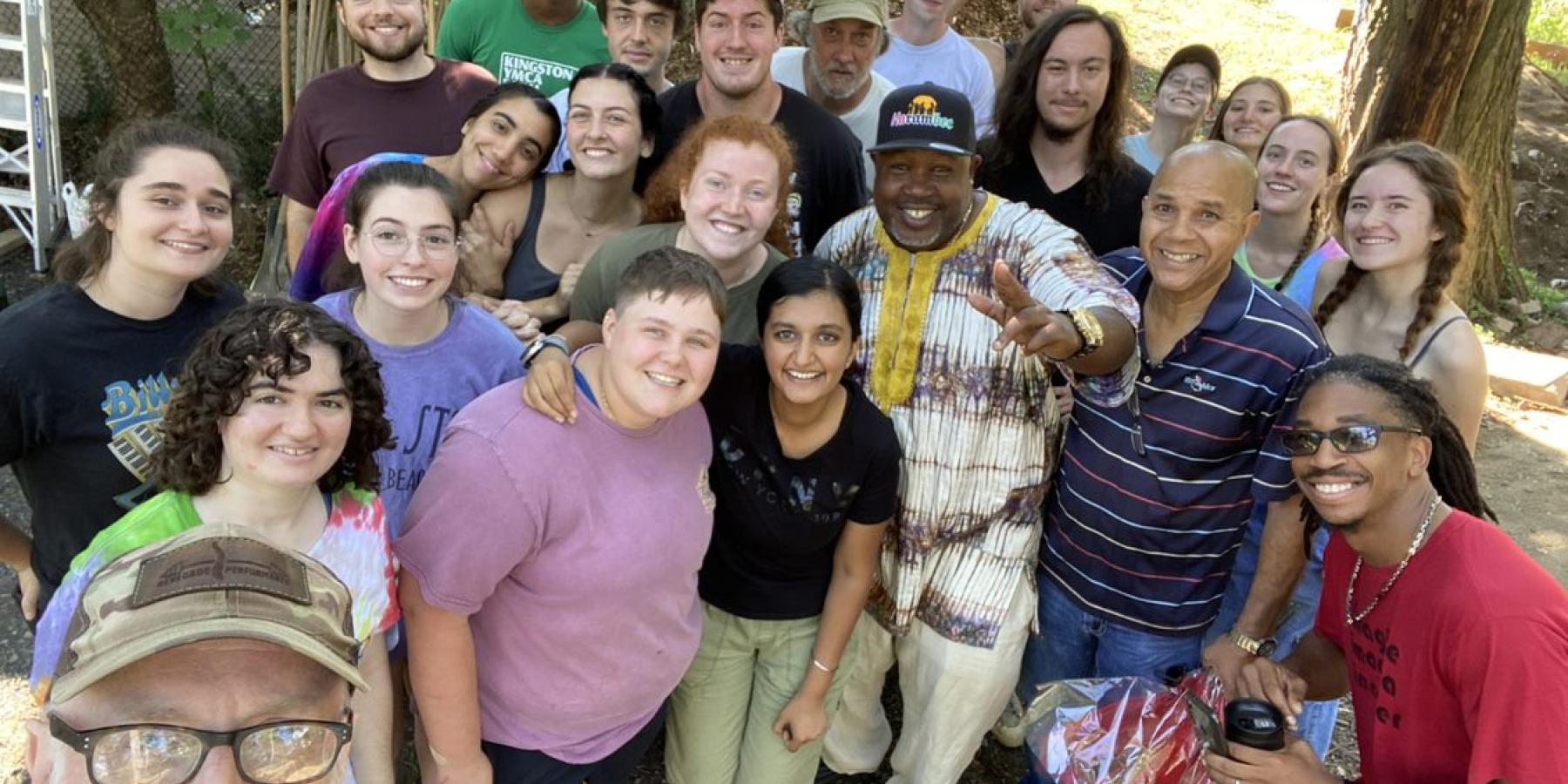Pine Street African Burial Ground
Support
The Pine Street African Burial ground in Kingston, NY was a burial ground used by African Americans up until around 1870, at which point it was bought and used as a lumber yard. Many of the individuals buried on the grounds were likely once enslaved. The burial ground was nothing more than a backyard until around 1990, when Dr. Joseph Diamond, using historical maps, located the cemetery. The property was later – and through much trial and tribulation – purchased by the Harambee organization to be converted into a true and respected cemetery. The restoration of the burial ground is part of a restorative justice campaign by Harambee to teach the local community about the past and to bring together the community as a whole. The current dig, year one of a likely five-year process, was successful in proving that the site was in a burial ground; students were able to locate burials and tombstones of some individuals on the site as well as a possible boundary line of the burial ground. Many of the burials found were ultimately left in the ground, as the goal of the project this year was to merely affirm it was in fact a burial site. As the dig is still ongoing, many of the findings are still being analyzed. I, along with the 10 other undergraduates and two graduate students, were led by Dr. Kenneth Nystrom on this excavation. The excavation included mapping of ground context, sorting and analysis of the archeological matter, field analysis of human and animal bones, and becoming proficient in the historical context of the site. Given that the excavation took place in a cemetery open to the public, I also had to interact with and educate any members of the public that visited the site. Additionally, as we were working in the backyard of the Harambee community house, I also had to interact and help educate the children in the house about what the excavation was and why we were doing it. Participating in the dig has helped me greatly improve my field analysis skills as well as learning how an archeological dig functions and the necessary steps to take throughout it. I am very thankful for having been able to participate in and learn from this project, as well as being able to assist the Harambee organization in this endeavor.

